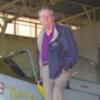
Sign in to follow this
Followers
0

Announcing the USAF T-37B Tweet !!!
By
Tom Allensworth, in FSX/FSX-SE Aircraft and Panel Design Forum - How To


By
Tom Allensworth, in FSX/FSX-SE Aircraft and Panel Design Forum - How To